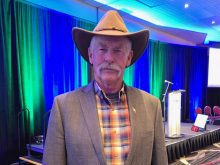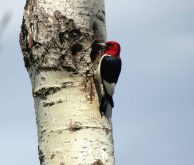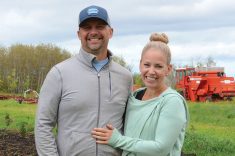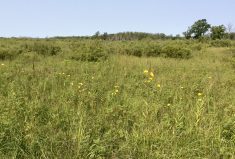A plan to protect 500,000 hectares of Prairie grasslands by 2030 is coming to fruition under the Nature Conservancy of Canada’s Prairie Grasslands Action Plan, which was unveiled June 5 to coincide with World Environment Day.
“Grasslands are the most endangered ecosystem in Canada,” said Jeremy Hogan, director of prairie grassland conservation for the Nature Conservancy of Canada. “There’s only 18 per cent left across the three Prairie provinces so it’s a very important campaign that we’re embarking on to make sure that what is left is protected.”
Why it matters: The Nature Conservancy of Canada is a private, non-profit land conservation organization that works with ranchers and farmers to protect wildlife habitat.
Read Also
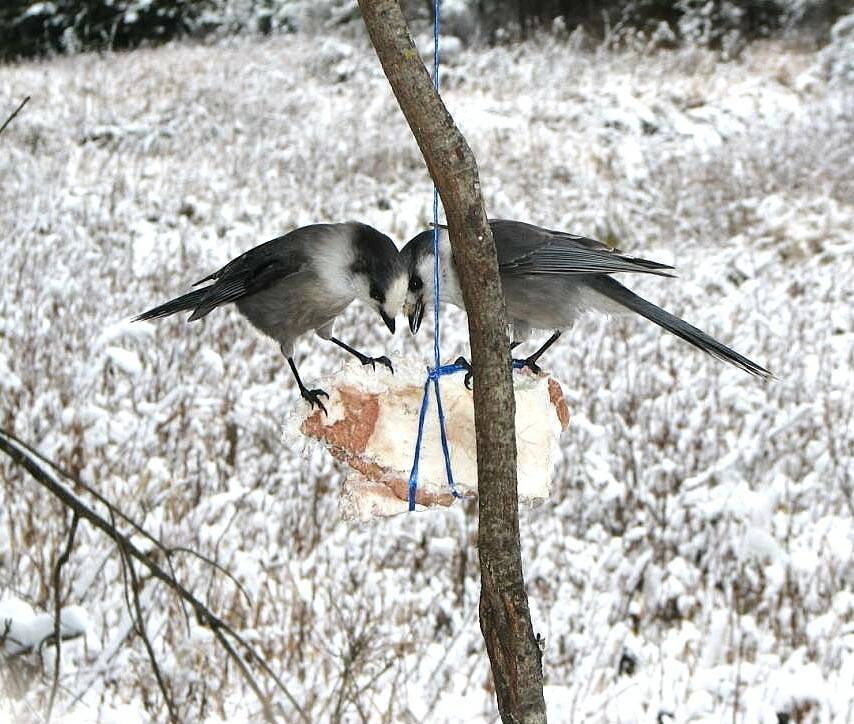
Hunting with whiskey jacks
Canada jays, or whiskey jacks, are bold little deer hunting pals that don’t mind getting close, if it means a piece of the offal or deer fat left over from a successful forest hunt in Manitoba.
The announcement highlighted three parcels of land, one from each Prairie province, that are at various stages of conservation.

In Manitoba, the NCC-supported project represents the largest ever conservation easement agreement in the province.
Known as 21 Farms, the property north of Wawanesa, Man., is nearly 455 hectares and boasts native mixed-grass prairie and bur oak savannah, along with sandhill prairie and sandhill forest. The project also supports elk, coyotes, American badgers, Sprague’s pipits, and a large sharp-tailed grouse population.
The property is currently grazed, and is intended to remain as pasture, consistent with NCC’s vision of a healthy prairie that is also part of the livestock industry.

Eric and Carol Moore are the landowners behind the easement. Because conservation easement agreements place restrictions on land use, landowners are frequently offered compensation for that loss. In this case, the agreement was covered under what is called a split receipt.
The NCC “paid for a percentage of the value and the landowners, Eric and Carroll, donated a significant portion of that,” said Kevin Teneycke, NCC regional vice-president for Manitoba and Saskatchewan.
The landowners will then be issued a tax receipt for the amount of the donation.
“We certainly realize the limited value of tax receipts, especially in agricultural production, but this family saw the value of it. So they made that decision and they donated a portion of the value,” Teneycke said.
Alberta
In Alberta, the highlighted project is known as the Yarrow. The 1,650-hectare project is near Waterton Lakes National Park in the southwest corner of the province.
Hogan pegged the total cost to conserve the expansive and ecologically diverse property at roughly $20 million. The NCC recently completed a massive fundraising campaign to conserve the area.

“It was one of our largest fundraising projects ever in Alberta,” Hogan said. “It was a whole-team approach… We had a very generous donation from the current landowners, the Fischer-Cuthbertson family.”
The Government of Canada (through the Natural Heritage Conservation Program) and the Government of Alberta also contributed significantly, as did the agriculture industry. But Hogan said he was truly impressed with support from the general public.
“Hundreds of individuals in Alberta and across Canada also came together to support this project,” he said.
The Yarrow will become part of an area near the national park where the NCC has previously invested. “We’ve built up an area called the Waterton Parkfront, and there are over 30,000 hectares protected in the area that will be contiguous with the park itself,” Hogan said.
It was previously private ranch land.
“Parts of it are grazed and will continue to be grazed because the grasslands require those disturbances from livestock,” said Hogan. “The rest were privately owned lands that remain an intact native ecosystem. It’s pretty special. The whole area is actually a UNESCO World Heritage Site.”

The area is home to bears, elk, deer and cougars.
“Giving these animals space to move and space to live is critical beyond the park boundaries,” he said.
The Yarrow’s deal is a fee-simple agreement in which the NCC outright purchases the land.
Under a conservation easement, the landowner retains title to the land but that title is modified to include land use restrictions in perpetuity.
Saskatchewan
The final parcel highlighted by the NCC is a section of grasslands in the Cypress Uplands Natural Area in southwestern Saskatchewan, dubbed the Parker Conservation Project.
These Cypress uplands rise more than 600 metres above the surrounding plains, making it the highest elevation east of the Canadian Rockies.

“That area of southwestern Saskatchewan is very unique due to that change in topography and it holds an impressive amount of biodiversity, from grassland birds to large mammals,” said Teneycke.
Wildlife commonly found in the area include pronghorn, mule and white-tailed deer, elk and cougars. The area holds the highest diversity of birds in Saskatchewan and includes at-risk species such as burrowing owls, chestnut-collared longspurs, common nighthawks and ferruginous hawks.
“It’s a very diverse part of Saskatchewan and an area that has a significant amount of high-quality native grasslands remaining,” said Teneycke.

The project isn’t as far along as the other two and is still in development, according to the NCC. Teneycke said they are working out details with a single landowner.
“We have very high confidence in the project, but all of the terms have not yet been concluded on it,” he said. “It’s another great example of a conservation project where the nature conservancy is working in partnership with livestock producers and ranching operations.”
Teneycke said, at its core, the launch of the Prairie Grasslands Action Plan is about preserving life as we know it across the Prairies. That means working with current stewards of the land — farmers and ranchers.
“Grasslands continue to have ecological, cultural, spiritual and economic significance. Only by working together can we make a real change.”



